Importing a car from China to Australia can be an incredibly rewarding endeavor, especially considering the variety of high-quality vehicles available at competitive prices in China. However, the process is multi-faceted and requires a thorough understanding of both Chinese and Australian regulations, cost implications, documentation requirements, and shipping logistics. This guide aims to provide you with a comprehensive overview of every step involved, from initial planning to the final delivery. By following this guide, you can ensure a seamless and efficient importation process, avoiding common pitfalls and saving both time and money.
Related Article : Shipping From China to Australia
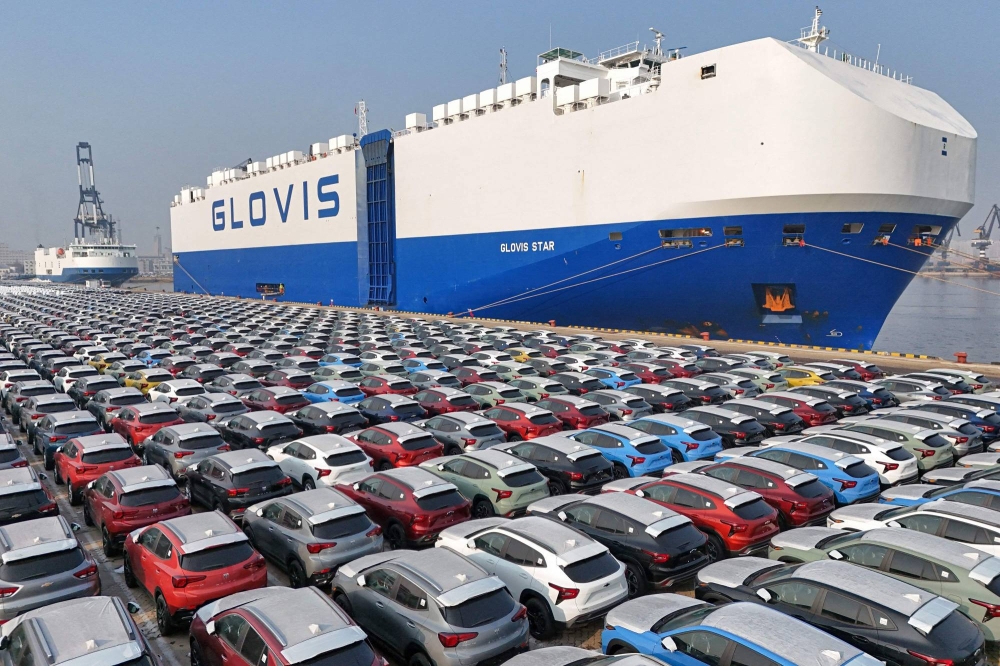
Understanding the Import Regulations
Successfully importing a car from China to Australia starts with a comprehensive understanding of the import regulations in both countries. Familiarizing yourself with these regulations will help you avoid legal issues and ensure that your vehicle meets all necessary compliance requirements.
Australian Government Regulations
The Australian Government has stringent regulations regarding vehicle imports to ensure safety, environmental standards, and consumer protection. Here are the key aspects you need to consider:
- Vehicle Import Approval (VIA): Before you can import a car into Australia, you must obtain a Vehicle Import Approval (VIA) from the Department of Infrastructure, Transport, Regional Development and Communications. This approval is mandatory and must be obtained prior to shipping the vehicle.
- Australian Design Rules (ADR): Your vehicle must comply with the Australian Design Rules (ADR), which set the national standards for vehicle safety, anti-theft, and emissions. If the car does not meet ADR specifications, modifications may be required.
- Customs and Quarantine: Once your vehicle arrives in Australia, it will be subject to customs and quarantine checks by the Australian Border Force (ABF) and the Department of Agriculture, Water and the Environment. These checks ensure that the vehicle complies with biosecurity and customs regulations.
Chinese Export Regulations
Understanding the export regulations in China is equally important to ensure a smooth shipping process. Key considerations include:
- Export Documentation: You will need to obtain several export documents from Chinese authorities, including the Export Certificate, Commercial Invoice, and Bill of Lading (BOL). These documents are crucial for the customs clearance process in both China and Australia.
- Inspection and Certification: The vehicle must undergo inspection and certification by Chinese authorities to ensure it is fit for export. This includes verifying the vehicle’s condition and ensuring it meets the export standards set by the Chinese government.
- Shipping Company Requirements: Ensure that the shipping company you choose is well-versed in handling vehicle exports from China. They should be able to provide guidance on the necessary documentation and compliance requirements.
By understanding and adhering to the import regulations set by both the Australian and Chinese governments, you can significantly streamline the importation process. This foundational knowledge will also help you avoid potential delays and additional costs associated with non-compliance.
how much to ship a car from china

Understanding the cost breakdown is crucial for budgeting and planning your car import from China to Australia. Several cost components need to be accounted for to ensure a smooth and financially viable import process. Here’s a detailed breakdown:
Vehicle Purchase Cost
The first and most significant cost component is the purchase price of the vehicle in China. This cost can vary widely depending on the make, model, year, and condition of the car. Popular car models for import include electric vehicles (EVs) and luxury brands, which often come at competitive prices in China compared to other markets.
- New Vehicles: Generally come with a higher purchase price but lower modification and compliance costs.
- Used Vehicles: Typically cheaper but may require more extensive modifications to meet Australian Design Rules (ADR).
Shipping Costs
Shipping costs form a substantial part of the overall expense. The cost will vary based on the shipping method chosen—Ocean Freight or Air Freight—and the specific services provided by the freight forwarder.
- Ocean Freight:
- Container Shipping: Ideal for high-value vehicles, providing additional protection against damage.
- Roll-on/Roll-off (RoRo) Shipping: More cost-effective for standard vehicles but offers less protection.
- Air Freight: Faster but significantly more expensive than ocean freight. Often used for high-value or urgently needed vehicles.
- Dantful International Logistics: Offers competitive and transparent pricing for both ocean and air freight services, ensuring your vehicle is transported safely and efficiently.
| Shipping Method | Cost Range (USD) | Typical Use Case |
|---|---|---|
| Container Shipping | $1,500 – $3,000 | High-value or fragile vehicles |
| RoRo Shipping | $800 – $1,500 | Standard vehicles |
| Air Freight | $5,000 – $10,000 | High-value or urgent shipments |
Import Taxes and Duties
Upon arrival in Australia, your vehicle will be subject to several taxes and duties, including:
- Customs Duty: Generally 5% of the vehicle’s customs value.
- Goods and Services Tax (GST): 10% of the total value, including the vehicle cost, customs duty, and shipping costs.
- Luxury Car Tax (LCT): Applicable to vehicles over a certain value threshold. The rate as of 2023 is 33% on the value above the threshold.
Additional Costs
Several additional costs may be incurred during the import process:
- Insurance Services: Essential for covering potential damage during transit. Dantful International Logistics offers comprehensive insurance options.
- Customs Clearance: Fees for processing customs documentation and inspections. Utilizing professional customs clearance services can ensure a smooth process.
- Vehicle Compliance and Modifications: Costs for modifying the vehicle to meet ADR standards, which may include changes to lighting, emissions, and safety features.
- Quarantine Inspection: Fees for biosecurity inspections by the Australian Department of Agriculture.
By understanding these cost components, you can create a detailed budget and avoid unexpected expenses, ensuring a smooth and financially viable import process.
Choosing the Right Freight Forwarder
Selecting the right freight forwarder is a critical step in the car import process. A reliable and experienced freight forwarder can simplify the complex logistics involved, ensure compliance with regulations, and provide peace of mind throughout the entire process. Here are key factors to consider when choosing a freight forwarder:
Expertise and Experience
Look for a freight forwarder with proven expertise and experience in handling vehicle imports, particularly from China to Australia. They should be well-versed in the specific regulations, documentation, and logistical challenges involved.
Dantful International Logistics: Specializes in international logistics and has extensive experience in shipping vehicles from China to various global destinations, including Australia. Their expertise ensures a smooth and hassle-free import process.
Comprehensive Services
A good freight forwarder should offer a wide range of services to cover all aspects of the import process, including:
- Shipping Options: Both ocean and air freight options, tailored to your specific needs.
- Documentation Assistance: Help with preparing and submitting all necessary documents, such as the Bill of Lading, Commercial Invoice, and Import Permit.
- Customs Clearance: Professional customs clearance services to navigate the complex customs procedures in both China and Australia.
- Insurance: Comprehensive insurance services to protect your vehicle during transit.
- Warehouse Services: Secure storage options if needed.
Transparent Pricing
Transparency in pricing is essential to avoid hidden costs and unexpected fees. Ensure that the freight forwarder provides a detailed and clear cost breakdown for their services.
Dantful International Logistics: Offers transparent and competitive pricing, with no hidden costs. They provide detailed quotes that cover all aspects of the shipping process, ensuring you know exactly what to expect.
Communication and Support
Effective communication and responsive customer support are crucial for a smooth import process. Ensure that the freight forwarder offers prompt and clear communication, keeping you informed at every stage.
By choosing the right freight forwarder, such as Dantful International Logistics, you can streamline the import process, ensure compliance with regulations, and enjoy a hassle-free experience. Their comprehensive services, expertise, and customer-centric approach make them an ideal partner for importing and shipping cars from China to Australia.
Shipping Methods
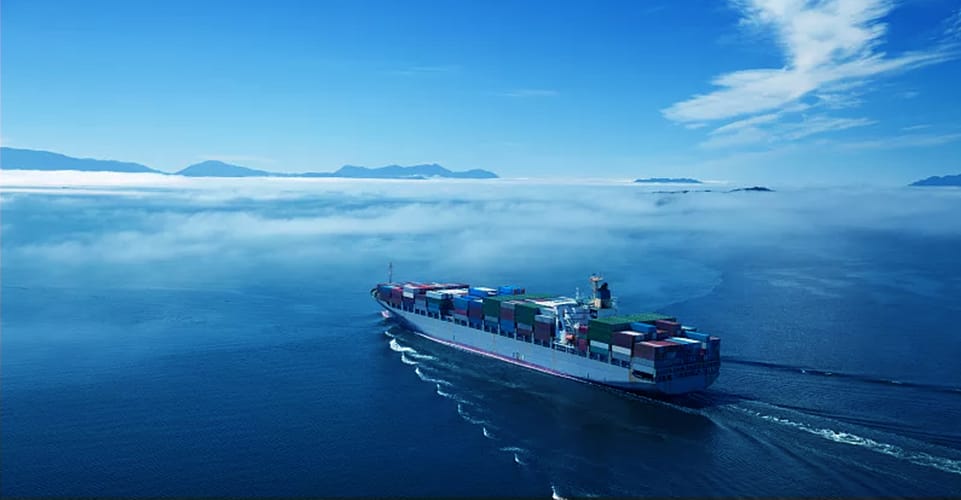
Choosing the appropriate shipping method is a critical decision that can greatly impact the cost, speed, and safety of your car import from China to Australia. Here are the main shipping methods available, along with their respective advantages and considerations:
Ocean Freight
Ocean Freight is the most common and cost-effective method for shipping cars internationally. It involves transporting your vehicle by sea in either containers or specialized Roll-on/Roll-off (RoRo) vessels.
- Container Shipping:
- Pros:
- Provides maximum protection for the vehicle against weather and potential damage.
- Suitable for high-value and luxury cars.
- Allows for the shipment of additional items inside the container.
- Cons:
- Generally more expensive than RoRo.
- Longer transit times compared to air freight.
- Pros:
- Roll-on/Roll-off (RoRo) Shipping:
- Pros:
- More cost-effective for standard vehicles.
- Simplifies the loading and unloading process.
- Generally faster than container shipping.
- Cons:
- Less protection against weather and potential damage.
- Usually does not allow for the shipment of additional items inside the vehicle.
- Pros:
| Shipping Method | Cost Range (USD) | Typical Use Case |
|---|---|---|
| Container Shipping | $1,500 – $3,000 | High-value or fragile vehicles |
| RoRo Shipping | $800 – $1,500 | Standard vehicles |
Dantful International Logistics offers comprehensive ocean freight services, including both container and RoRo shipping, tailored to your specific needs and budget.
Air Freight
Air Freight is the fastest but most expensive method for shipping cars internationally. It is typically used for high-value, urgent shipments or when the destination has limited access via sea.
- Pros:
- Significantly faster transit times compared to ocean freight.
- High level of security and minimal risk of damage.
- Ideal for luxury and high-value vehicles that need to reach their destination quickly.
- Cons:
- Much higher cost compared to ocean freight.
- Limited capacity and availability.
Dantful International Logistics provides reliable air freight services for those who require expedited shipping solutions, ensuring your vehicle arrives safely and promptly.
Read More:
- Shipping From China to the United States
- Shipping From China TO CANADA
- Shipping From China To Netherlands
- Shipping From China To UNITED KINGDOM
- Shipping From China To ALGERIA
- Shipping from China to UAE
- Shipping from China to Saudi Arabia
Documentation Needed
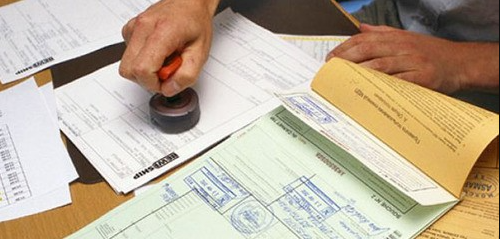
Proper documentation is essential for a smooth car import process from China to Australia. Having all necessary documents prepared and accurately completed will help avoid delays and ensure compliance with both Chinese and Australian regulations. Here’s a detailed overview of the key documents required:
Bill of Lading (BOL)
The Bill of Lading is a critical document issued by the carrier to acknowledge receipt of the vehicle for shipment. It serves as a contract between the shipper and the carrier and as a receipt for the vehicle.
- Details Needed:
- Shipper and consignee information.
- Vehicle details (make, model, VIN).
- Shipping method and terms.
- Origin and destination ports.
Commercial Invoice
The Commercial Invoice is a document that provides information about the vehicle sale and is used for customs valuation and clearance.
- Required Information:
- Seller and buyer information.
- Vehicle description (make, model, year, VIN).
- Purchase price and payment terms.
- Date of sale.
Packing List
The Packing List provides detailed information about the contents of the shipment, including the vehicle.
- Details Included:
- Vehicle description (make, model, VIN).
- Additional items shipped with the vehicle (if any).
- Shipping dimensions and weight.
Import Permit and Compliance Forms
To import a vehicle into Australia, you must obtain an Import Permit from the Department of Infrastructure, Transport, Regional Development and Communications. Additionally, various compliance forms may be required to ensure the vehicle meets Australian standards.
- Required Permits and Forms:
- Vehicle Import Approval (VIA).
- Compliance with Australian Design Rules (ADR).
- Quarantine forms for biosecurity inspection.
Having these documents accurately prepared and submitted will streamline the customs clearance process and help avoid potential delays or issues.
Pre-Shipping Preparations
Before shipping your vehicle from China to Australia, several pre-shipping preparations are necessary to ensure a smooth and compliant process. These steps include vehicle inspection, modifications, and documentation checks.
Vehicle Inspection
A thorough vehicle inspection is essential to verify the condition of the car and ensure it is fit for export and import.
- Inspection Requirements:
- Check for any existing damage or issues.
- Ensure the vehicle is in good working condition.
- Verify that all lights, brakes, and safety features are functioning properly.
Vehicle Modifications and Compliance
To meet Australian standards, your vehicle may require modifications before shipping. Compliance with the Australian Design Rules (ADR) is mandatory.
- Necessary Modifications:
- Lighting: Ensure headlights, taillights, and indicators meet ADR specifications.
- Emissions: Verify that the vehicle meets Australian emissions standards.
- Safety Features: Ensure that all safety features, such as seat belts and airbags, comply with ADR requirements.
Dantful International Logistics can assist with arranging these modifications to ensure your vehicle meets all necessary standards before shipping.
Documentation Checks
Before shipping, double-check all required documentation to ensure accuracy and completeness.
- Key Documents:
- Bill of Lading (BOL).
- Commercial Invoice.
- Packing List.
- Import Permit and Compliance Forms.
Ensuring that all documentation is in order will help avoid delays and issues during the shipping and customs clearance process.
By completing these pre-shipping preparations, you can ensure a smooth and compliant import process, reducing the risk of delays and additional costs. Dantful International Logistics offers comprehensive support and services to help you navigate these preparations effectively.
Shipping Process
The shipping process for importing a car from China to Australia involves several critical steps. Understanding what to expect at each stage will help you plan effectively and ensure a smooth and hassle-free experience. Here is a step-by-step timeline of the shipping process:
Step-by-Step Timeline
- Vehicle Purchase and Preparation:
- Purchase the vehicle from a reputable seller in China.
- Ensure that the vehicle meets all the necessary export requirements and undergoes a thorough inspection.
- Obtain all required export documentation from Chinese authorities.
- Choose a Shipping Method:
- Decide whether to use Ocean Freight (Container Shipping or RoRo) or Air Freight based on your budget, timeline, and vehicle protection needs.
- Contact Dantful International Logistics to arrange the shipping and get a detailed quote.
- Pre-Shipping Documentation:
- Prepare all necessary documentation, including the Bill of Lading, Commercial Invoice, Packing List, and Import Permit.
- Double-check the accuracy and completeness of all documents.
- Vehicle Modifications and Compliance:
- Make any required modifications to ensure the vehicle complies with Australian Design Rules (ADR).
- Obtain compliance certificates and ensure all modifications are documented.
- Transport to Port of Departure:
- Arrange for the vehicle to be transported to the port of departure in China.
- Coordinate with Dantful International Logistics to ensure timely and secure delivery to the port.
- Loading and Shipping:
- The vehicle is loaded onto the chosen vessel (container or RoRo) or aircraft.
- Ensure that the vehicle is securely loaded to prevent damage during transit.
- In-Transit Monitoring:
- Track the shipment throughout the transit period.
- Dantful International Logistics provides real-time tracking and updates.
- Arrival at Australian Port:
- The vehicle arrives at the designated port in Australia.
- Coordinate with Dantful International Logistics for unloading and customs clearance.
- Customs Clearance:
- Submit all required documentation to Australian customs.
- Pay any applicable customs duties, GST, and other fees.
- Dantful International Logistics offers professional customs clearance services to streamline this process.
- Quarantine Inspection:
- The vehicle undergoes a biosecurity inspection by the Australian Department of Agriculture.
- Ensure that the vehicle meets all quarantine requirements to avoid delays.
- Final Delivery:
- Arrange for the vehicle to be transported from the port to your desired location.
- Complete any remaining registration and compliance procedures in Australia.
By following these steps and coordinating with a reliable freight forwarder like Dantful International Logistics, you can ensure a smooth and efficient shipping process.
Customs Clearance in Australia
Navigating the customs clearance process in Australia is a crucial step in importing a car from China. Proper preparation and understanding of the requirements will help you avoid delays and additional costs. Here’s a detailed overview of the customs clearance process:
Detailed Customs Clearance Process
- Arrival Notification:
- Upon the vehicle’s arrival at the Australian port, you will receive a notification from the shipping carrier or freight forwarder.
- Ensure you have all necessary documentation ready for submission.
- Document Submission:
- Submit all required documents to the Australian Border Force (ABF) for customs clearance.
- Key documents include the Bill of Lading, Commercial Invoice, Packing List, and Import Permit.
- Customs Duty and GST Payment:
- Pay any applicable customs duties and Goods and Services Tax (GST).
- Customs Duty: Generally 5% of the vehicle’s customs value.
- GST: 10% of the total value, including the vehicle cost, customs duty, and shipping costs.
- Ensure that all payments are made promptly to avoid delays.
- Customs Inspection:
- The ABF may conduct a physical inspection of the vehicle to verify compliance with import regulations.
- Ensure that the vehicle is accessible and all necessary modifications have been documented.
- Quarantine Inspection:
- The vehicle will undergo a biosecurity inspection by the Australian Department of Agriculture, Water and the Environment.
- Ensure that the vehicle is clean and free of any biosecurity risks, such as soil, plant material, or pests.
- Compliance Verification:
- Verify that the vehicle meets all Australian Design Rules (ADR) and other compliance requirements.
- Submit any additional compliance certificates or documentation as required.
- Final Clearance:
- Once all inspections and verifications are complete, the ABF will issue a customs clearance.
- Coordinate with your freight forwarder to arrange for the vehicle’s release and final delivery.
Dantful International Logistics Customs Clearance Services
Dantful International Logistics offers professional customs clearance services to help you navigate this complex process. Their team of experts will:
- Assist with the preparation and submission of all required documentation.
- Ensure compliance with Australian customs and biosecurity regulations.
- Coordinate inspections and verifications with relevant authorities.
- Provide support and guidance throughout the customs clearance process.
By utilizing professional customs clearance services, you can ensure a smooth and efficient import process, avoiding delays and additional costs.
Dantful International Logistics Services:
- Dantful Ocean Freight Services
- Air Freight From China
- Amazon FBA Freight Forwarding
- WAREHOUSE Services
- One-Stop Customs Clearance Solution
- Cargo Insurance Services in China
- DDP Shipping Services By Dantful Logistics
- Out of Gauge Cargo Transportation Shipping Services
Post-Arrival Procedures
After your vehicle has successfully cleared customs and quarantine in Australia, there are several post-arrival procedures to complete before you can legally drive or sell the vehicle. These steps include vehicle inspection, registration, and final delivery.
Vehicle Inspection Upon Arrival
Once the vehicle has arrived and cleared customs, a thorough inspection is necessary to ensure it is in the same condition as when it was shipped. This inspection will help identify any potential damage that may have occurred during transit.
- Inspection Checklist:
- Check for any visible damage or issues.
- Verify that all lights, brakes, and safety features are functioning properly.
- Ensure that any required modifications have been completed and documented.
Registration and Licensing in Australia
Before you can legally drive the vehicle on Australian roads, it must be registered and licensed with the relevant state or territory authorities.
- Registration Process:
- Obtain a Vehicle Identification Number (VIN) if the vehicle does not already have one.
- Submit the completed registration application form, along with any required documentation, such as the Import Approval, compliance certificates, and proof of identity.
- Pay the registration and licensing fees.
- Obtain compulsory third-party (CTP) insurance, which is mandatory in all states and territories.
- State/Territory Registration Authorities:
- Each state and territory in Australia has its own registration authority, such as VicRoads in Victoria, Roads and Maritime Services (RMS) in New South Wales, and the Department of Transport and Main Roads in Queensland. Ensure you follow the specific requirements for your location.
Final Delivery to Your Location
After completing the registration and licensing process, arrange for the final delivery of the vehicle to your desired location. This may involve coordinating with a local transport company or driving the vehicle yourself.
- Final Delivery Options:
- Local Transport Company: If the vehicle needs to be transported over a long distance, consider hiring a local transport company to handle the delivery.
- Self-Drive: If the vehicle is already registered and insured, you may choose to drive it to your desired location.
By completing these post-arrival procedures, you can ensure your vehicle is legally compliant and ready for use on Australian roads. Dantful International Logistics can provide support and guidance throughout these steps, ensuring a smooth and hassle-free experience.
Tips for a Successful Import
Importing a car from China to Australia involves numerous steps and potential challenges. To ensure a successful and smooth import process, consider the following tips and best practices:
Plan Ahead
Planning is crucial for a successful car import. Start your preparations well in advance to allow ample time for each step of the process.
- Research: Gather detailed information on regulations, costs, and required documentation.
- Timeline: Create a timeline that includes all key milestones, from vehicle purchase to final delivery.
- Budget: Prepare a comprehensive budget that covers all costs, including hidden expenses.
Choose a Reputable Seller
The quality and condition of the vehicle you purchase are paramount. Ensure you are dealing with a reputable seller in China to avoid potential issues.
- Reputation: Check reviews and testimonials from previous buyers.
- Condition Reports: Request detailed condition reports and vehicle history.
- Verification: Verify the seller’s credentials and ensure they are authorized to sell and export vehicles.
Work with Experienced Professionals
Engage experienced professionals to assist with various aspects of the import process, including freight forwarding, customs clearance, and vehicle compliance.
- Freight Forwarder: Choose a reliable freight forwarder like Dantful International Logistics to handle shipping and logistics.
- Customs Broker: Utilize professional customs clearance services to navigate regulatory requirements.
- Compliance Experts: Work with experts to ensure your vehicle meets Australian Design Rules (ADR) and other standards.
Ensure Proper Documentation
Accurate and complete documentation is essential for avoiding delays and ensuring compliance with regulations.
- Checklists: Use checklists to ensure all required documents are prepared and submitted.
- Accuracy: Double-check all information for accuracy and completeness.
- Timeliness: Submit documentation within the required timeframes to avoid delays.
Stay Informed on Regulations
Regulations for vehicle imports can change, so staying informed is crucial.
- Updates: Regularly check for updates to import regulations and compliance standards.
- Consultation: Consult with professionals and authorities to ensure you are aware of the latest requirements.
Monitor the Shipping Process
Keep track of your vehicle throughout the shipping process to ensure it arrives on time and in good condition.
- Tracking: Use tracking services provided by your freight forwarder, such as Dantful International Logistics.
- Communication: Maintain regular communication with your freight forwarder and shipping carrier.
- Inspection: Inspect the vehicle upon arrival to verify its condition.
Prepare for Post-Arrival Procedures
Be ready to complete all necessary post-arrival procedures, including customs clearance, vehicle inspection, and registration.
- Customs Clearance: Ensure all documentation is in order and fees are paid promptly.
- Quarantine Inspection: Prepare the vehicle for biosecurity inspections to avoid delays.
- Registration: Complete the registration and licensing process for legal use on Australian roads.
By following these tips and best practices, you can ensure a successful and smooth car import process, avoiding common pitfalls and minimizing risks.
FAQ

To address common questions and concerns regarding importing and shipping cars from China to Australia, here is a comprehensive FAQ section:
Q1: What documents are required for importing a car from China to Australia?
A: Key documents include the Bill of Lading (BOL), Commercial Invoice, Packing List, Import Permit, and compliance certificates. Accurate and complete documentation is essential for customs clearance and compliance with regulations.
Q2: How long does the shipping process take?
A: The shipping timeline varies depending on the shipping method. Ocean Freight typically takes 4-6 weeks, while Air Freight can take 1-2 weeks. Factors such as port congestion and customs processing can also affect transit times.
Q3: What are the costs involved in importing a car?
A: Costs include the vehicle purchase price, shipping costs (ocean or air freight), import taxes and duties (customs duty, GST, luxury car tax), insurance, customs clearance fees, and compliance-related expenses. Prepare a detailed budget to cover all costs.
Q4: Do I need to modify the vehicle to meet Australian standards?
A: Yes, the vehicle must comply with Australian Design Rules (ADR). Necessary modifications may include changes to lighting, emissions, and safety features. Ensure all modifications are documented and certified.
Q5: Can I import any type of car from China?
A: While many vehicles can be imported, there are restrictions based on vehicle age, type, and compliance with Australian standards. Check with the Department of Infrastructure, Transport, Regional Development and Communications for specific regulations.
Q6: What happens if my vehicle doesn’t pass the quarantine inspection?
A: If the vehicle does not pass the biosecurity inspection, it may be subjected to cleaning, treatment, or even re-export at your expense. Ensure the vehicle is clean and free of biosecurity risks before shipping.
References
- Australian Government Department of Infrastructure, Transport, Regional Development and Communications: For information on Vehicle Import Approval (VIA) and Australian Design Rules (ADR)
- Australian Border Force (ABF): For customs clearance and duties information
- Department of Agriculture, Water and the Environment: For quarantine and biosecurity inspection requirements
- Vehicle Registration Authorities:
- VicRoads (Victoria) – Official Website
- Roads and Maritime Services (RMS) (New South Wales) – Official Website
- Department of Transport and Main Roads (Queensland) – Official Website

Young Chiu is a seasoned logistics expert with over 15 years of experience in international freight forwarding and supply chain management. As CEO of Dantful International Logistics, Young is dedicated to providing valuable insights and practical advice to businesses navigating the complexities of global shipping.


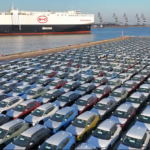




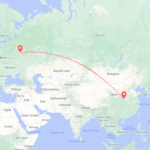
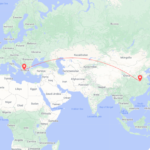
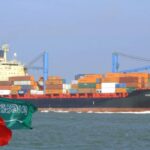
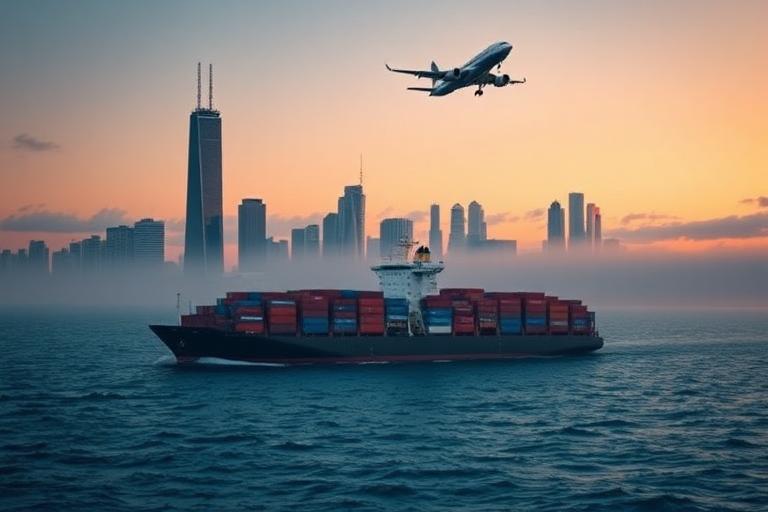
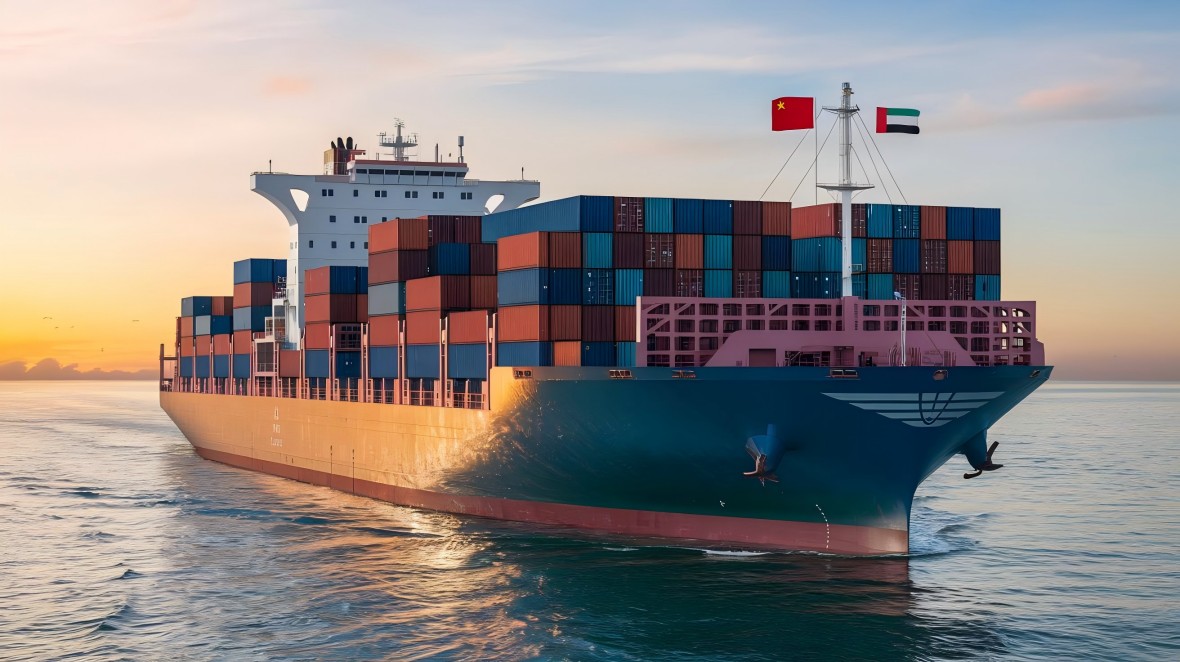
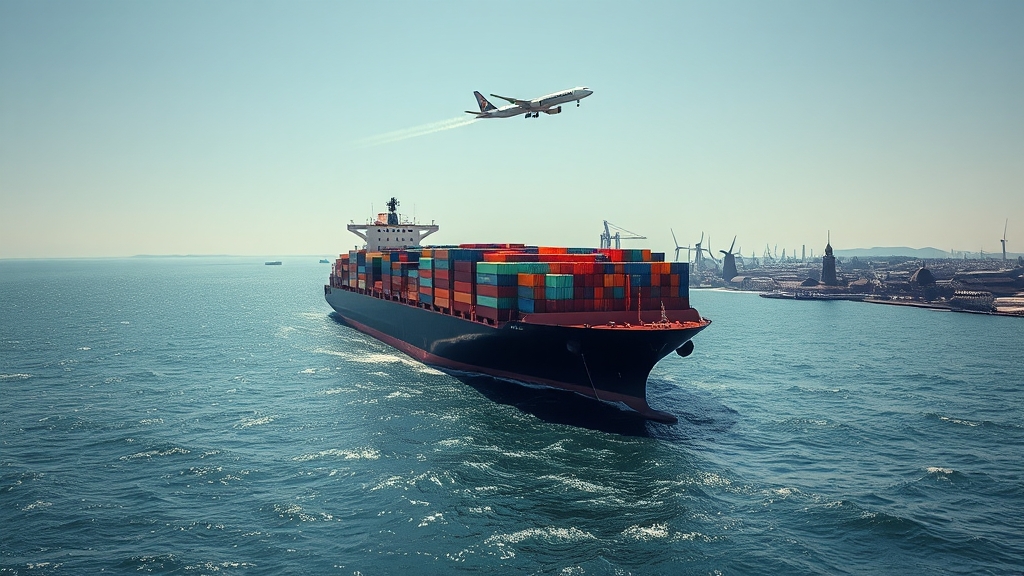
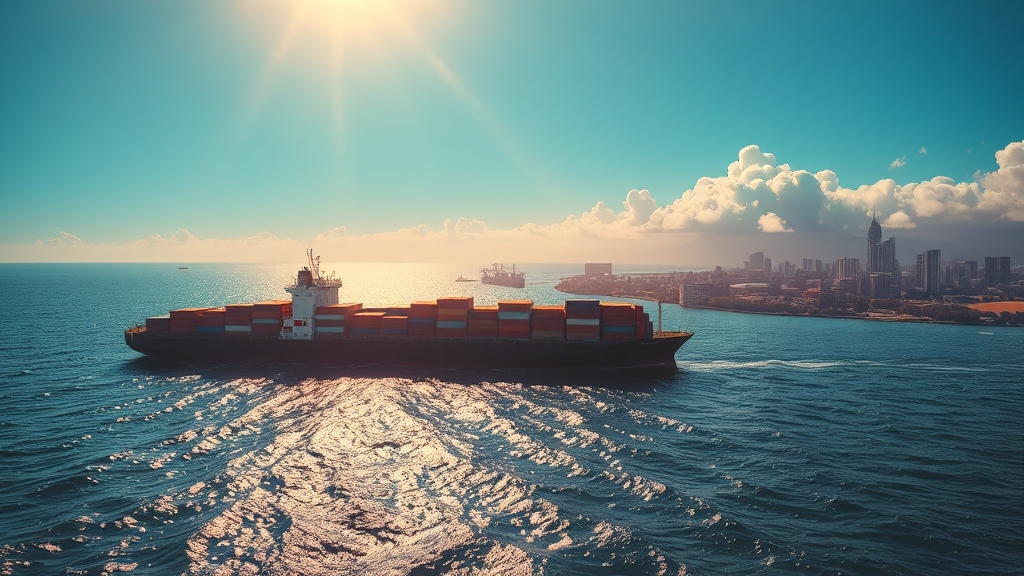
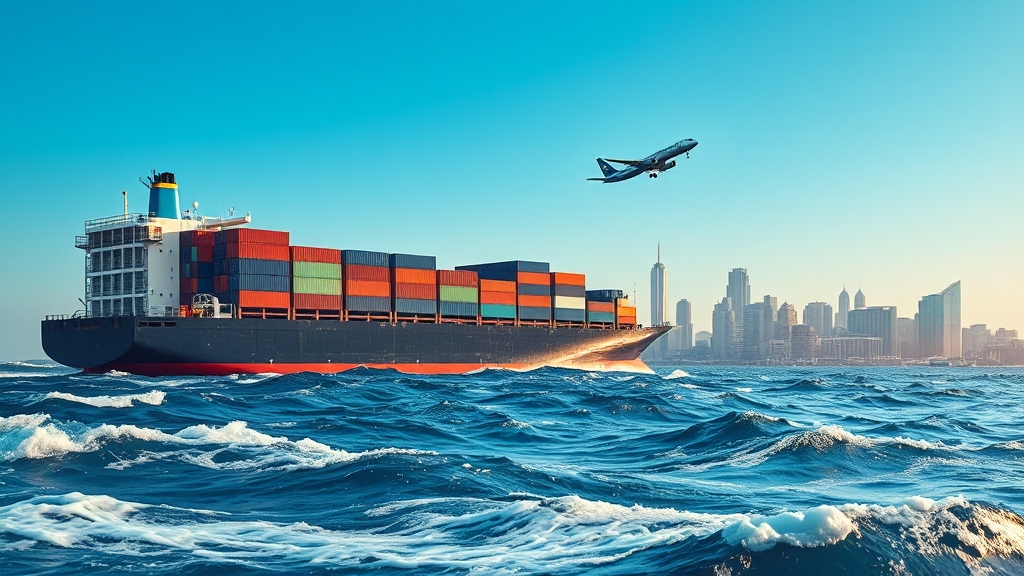





 Afrikaans
Afrikaans Shqip
Shqip አማርኛ
አማርኛ العربية
العربية Հայերեն
Հայերեն Azərbaycan dili
Azərbaycan dili Euskara
Euskara Беларуская мова
Беларуская мова বাংলা
বাংলা Bosanski
Bosanski Български
Български Català
Català Cebuano
Cebuano Chichewa
Chichewa 简体中文
简体中文 繁體中文
繁體中文 Corsu
Corsu Hrvatski
Hrvatski Čeština
Čeština Dansk
Dansk Nederlands
Nederlands English
English Esperanto
Esperanto Eesti
Eesti Filipino
Filipino Suomi
Suomi Français
Français Galego
Galego ქართული
ქართული Deutsch
Deutsch Ελληνικά
Ελληνικά Kreyol ayisyen
Kreyol ayisyen Harshen Hausa
Harshen Hausa Ōlelo Hawaiʻi
Ōlelo Hawaiʻi עִבְרִית
עִבְרִית हिन्दी
हिन्दी Hmong
Hmong Magyar
Magyar Íslenska
Íslenska Igbo
Igbo Bahasa Indonesia
Bahasa Indonesia Gaeilge
Gaeilge Italiano
Italiano 日本語
日本語 Basa Jawa
Basa Jawa ಕನ್ನಡ
ಕನ್ನಡ Қазақ тілі
Қазақ тілі ភាសាខ្មែរ
ភាសាខ្មែរ 한국어
한국어 كوردی
كوردی Кыргызча
Кыргызча ພາສາລາວ
ພາສາລາວ Latin
Latin Latviešu valoda
Latviešu valoda Lietuvių kalba
Lietuvių kalba Lëtzebuergesch
Lëtzebuergesch Македонски јазик
Македонски јазик Malagasy
Malagasy Bahasa Melayu
Bahasa Melayu മലയാളം
മലയാളം Maltese
Maltese Te Reo Māori
Te Reo Māori मराठी
मराठी Монгол
Монгол ဗမာစာ
ဗမာစာ नेपाली
नेपाली Norsk bokmål
Norsk bokmål پښتو
پښتو فارسی
فارسی Polski
Polski Português
Português ਪੰਜਾਬੀ
ਪੰਜਾਬੀ Română
Română Русский
Русский Samoan
Samoan Gàidhlig
Gàidhlig Српски језик
Српски језик Sesotho
Sesotho Shona
Shona سنڌي
سنڌي සිංහල
සිංහල Slovenčina
Slovenčina Slovenščina
Slovenščina Afsoomaali
Afsoomaali Español
Español Basa Sunda
Basa Sunda Kiswahili
Kiswahili Svenska
Svenska Тоҷикӣ
Тоҷикӣ தமிழ்
தமிழ் తెలుగు
తెలుగు ไทย
ไทย Türkçe
Türkçe Українська
Українська اردو
اردو O‘zbekcha
O‘zbekcha Tiếng Việt
Tiếng Việt Cymraeg
Cymraeg יידיש
יידיש Yorùbá
Yorùbá Zulu
Zulu